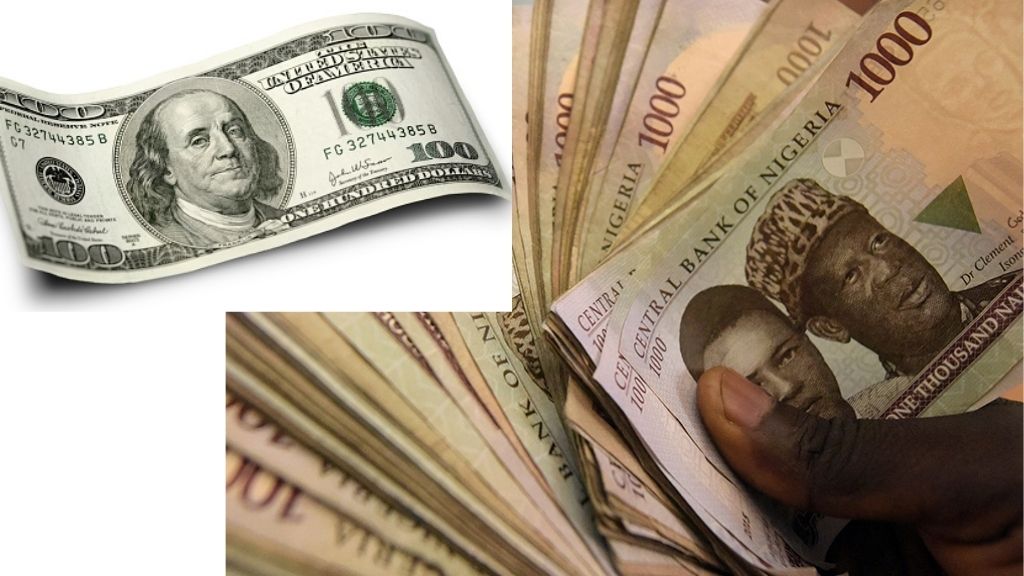Economy
What is Behind South Africa’s and Namibia’s Capital Market Developments?

When diamonds and gold were found in South Africa in the late 1800s, the economy was transformed. Following that, a large amount of global money was invested.
The nation has grown a well-developed industrial base in the years after World War II, and it has undergone extremely volatile growth rates, including several years when it was among the highest in the world.
South Africa, on the other hand, has had persistent economic difficulties since the late 1970s, owing to its apartheid policies, which caused many countries to suspend foreign investment and enforce more harsh trade restrictions against it.
Namibia has been classified as a lower-middle-income country with a per capita gross domestic product (GDP) that is slightly higher than the average for Sub-Saharan African countries.
However, the summary is deceptive. Only one-quarter of all Namibians and one-sixth of black Namibians have decent incomes; up to two-thirds of the population lives in abject poverty with inadequate access to public services. Because of a declining productive industry, a shortage of capital stock and serious world market problems for base metals and uranium oxide, economic development remains a challenge.
Furthermore, unless foreign assistance investments quickly turn into significant real inflows and private external investment in mining, manufacturing, and fisheries occurs, the one segment of the GDP that expanded steadily in the 1980s would decrease.
South Africa
The South African Reserve Bank, which is the sole issuing authority for the rand, the national currency, has a well-developed financial structure. It is in charge of monetary policy formulation and implementation, as well as managing foreign exchange trades.
There are several licensed banking institutions, many of which focus on commercial banking, as well as merchant, deposit, and investment banking, to name a few.
The Development Bank of Southern Africa, for example, is a quasi-governmental organization that promotes development programs. The banking market is dominated by private pension and provident funds, as well as more than two dozen insurance providers. The Johannesburg Stock Exchange is the centre of an active capital market.
South Africa, Africa’s second-largest economy after Nigeria, has a GDP that is far greater than that of its sub-Saharan neighbours. The Johannesburg Stock Exchange (JSE), which is 132 years old and has a market capitalization of more than USD1 trillion, is the biggest stock exchange in Africa.
The JSE is a comprehensive and cutting-edge exchange that offers complete electronic trading, clearing, and settlement of stocks, shares, and interest-rate securities, as well as financial, asset, and currency trading in South Africa.
On the JSE, there are approximately 350 companies listed, with industrials being the largest grouping, led by energy companies such as mines and oil companies.
The JSE, on the other hand, is facing strong headwinds. After decades with little competition, the JSE is now being tested by smaller competitors such as ZAR X, a low-cost model launched in 2016 to offer stock access to lower-income individuals.
Since then, new entrants have entered the ring, including A2X, 4AX, and the Equity Express Securities Exchange, which focuses on black economic empowerment. The market is currently focused on the newly implemented ‘twin peaks’ regulatory model, which response to weak financial sector policies and insufficient regulatory supervision.
It is intended to promote consumer trust and stimulate capital formation, much as it was in Australia, where the concept first debuted.
Namibia Profile
The majority of banking activity is handled by two commercial banks, First National Bank of Southern Africa and Standard Bank Namibia (both branches of South African parent companies). Following independence, land, infrastructure, and development banks were reorganized. In the mid-1990s, the Central Bank of Namibia introduced the Namibian dollar as an independent currency to replace the South African rand.
The Namibian Stock Exchange (NSX) currently has 50 listed companies. Namibia has the second-lowest population density of any sovereign nation, with just 2.6 million people.
The NSX was established in 1904 to help finance the country’s diamond rush. The rush was over by 1910, and the exchange was suddenly closed. The NSX did not reopen until 1992, 82 years later, with start-up funding from 36 Namibian companies.
Despite the fact that agriculture and tourism are important parts of the economy, other industries dominate the stock exchange. In reality, three industries account for half of the NSX’s listings: banking (four companies), mining (seven companies), and finance (three companies).
It is only recently that debt has been issued and listed. Namibia had virtually no public debt until 2011. In reality, the nation had one of the lowest debt-to-GDP ratios in the world, at just 16 per cent of GDP. International rating agencies downgraded the country to a sub-investment rating in 2017 due to the dramatic increase in public debt.
Namibian state-owned corporations and private businesses have floated bonds worth more than NAD33 billion (approximately £1.73 billion) on the NSX. As traditional financing sources dry up, more Namibian firms are expected to issue bonds in the immediate future. Because of the economic crisis, banks’ balance sheets and loan-to-deposit ratios have been strained, and they are less likely to lend to corporations.
The withdrawal of traditional finance provides an incentive for small businesses to raise money from their balance sheets, collateralized or government-guaranteed debt securities, or stock offerings on the local exchange.
The Report
From a small lunch party in New York City in 1937 to a vast array of 170,000 members and 157 societies in 2019, the Investment Club has grown to become the world’s largest investment organization, dedicated to leading the investment profession internationally for the ultimate good of society.
Early colonial times saw the establishment of several African exchanges. After the diamond and gold rush, South Africa led the way, followed by Zimbabwe, Egypt, and Namibia (at the time, a German colony) – all before 1905. Some businesses did not survive the commodity boom, but most are flourishing despite being significantly diversified and modernized.
Nigeria in the 1960s; Botswana, Mauritius, and Ghana in 1989; Namibia after its independence from South Africa in the 1990s.
Others, especially the East African exchanges, are relatively recent and are rapidly growing in popularity. All of these examples show how regulation, trading technologies, and fintech are allowing more market players to participate in finance and investing in a fairer, quicker, and lower-cost manner.
The African Securities Exchanges Association collaborated on the CFA Institute Research Foundation brief (ASEA).
Economy
FAAC Disburses 1.727trn to FG, States Local Councils in December 2024

By Modupe Gbadeyanka
The federal government, the 36 states of the federation and the 774 local government areas have received N1.727 trillion from the Federal Accounts Allocation Committee (FAAC) for December 2024.
The funds were disbursed to the three tiers of government from the revenue generated by the nation in November 2024.
At the December meeting of FAAC held in Abuja, it was stated that the amount distributed comprised distributable statutory revenue of N455.354 billion, distributable Value Added Tax (VAT) revenue of N585.700 billion, Electronic Money Transfer Levy (EMTL) revenue of N15.046 billion and Exchange Difference revenue of N671.392 billion.
According to a statement signed on Friday by the Director of Press and Public Relations for FAAC, Mr Bawa Mokwa, the money generated last month was about N3.143 trillion, with N103.307 billion used for cost of collection and N1.312 trillion for transfers, interventions and refunds.
It was disclosed that gross statutory revenue of N1.827 trillion was received compared with the N1.336 trillion recorded a month earlier.
The statement said gross revenue of N628.972 billion was available from VAT versus N668.291 billion in the preceding month.
The organisation stated that last month, oil and gas royalty and CET levies recorded significant increases, while excise duty, VAT, import duty, Petroleum Profit Tax (PPT), Companies Income Tax (CIT) and EMTL decreased considerably.
As for the sharing, FAAC disclosed that from the N1.727 trillion, the central government got N581.856 billion, the states received N549.792 billion, the councils took N402.553 billion, while the benefiting states got N193.291 billion as 13 per cent derivation revenue.
From the N585.700 billion VAT earnings, the national government got N87.855 billion, the states received N292.850 billion and the local councils were given N204.995 billion.
Also, from the N455.354 billion distributable statutory revenue, the federal government was given N175.690 billion, the states got N89.113 billion, the local governments had N68.702 billion, and the benefiting states received N121.849 billion as 13 per cent derivation revenue.
In addition, from the N15.046 billion EMTL revenue, FAAC shared N2.257 billion to the federal government, disbursed N7.523 billion to the states and transferred N5.266 billion to the local councils.
Further, from the N671.392 billion Exchange Difference earnings, it gave central government N316.054 billion, the states N160.306 billion, the local government areas N123.590 billion, and the oil-producing states N71.442 billion as 13 per cent derivation revenue.
Economy
Okitipupa Plc, Two Others Lift Unlisted Securities Market by 0.65%

By Adedapo Adesanya
The NASD Over-the-Counter (OTC) Securities Exchange recorded a 0.65 per cent gain on Friday, December 13, boosted by three equities admitted on the trading platform.
On the last trading session of the week, Okitipupa Plc appreciated by N2.70 to settle at N29.74 per share versus Thursday’s closing price of N27.04 per share, FrieslandCampina Wamco Nigeria Plc added N2.49 to end the session at N42.85 per unit compared with the previous day’s N40.36 per unit, and Afriland Properties Plc gained 50 Kobo to close at N16.30 per share, in contrast to the preceding session’s N15.80 per share.
Consequently, the market capitalisation added N6.89 billion to settle at N1.062 trillion compared with the preceding day’s N1.055 trillion and the NASD Unlisted Security Index (NSI) gained 19.66 points to wrap the session at 3,032.16 points compared with 3,012.50 points recorded in the previous session.
Yesterday, the volume of securities traded by investors increased by 171.6 per cent to 1.2 million units from the 447,905 units recorded a day earlier, but the value of shares traded by the market participants declined by 19.3 per cent to N2.4 million from the N3.02 million achieved a day earlier, and the number of deals went down by 14.3 per cent to 18 deals from 21 deals.
At the close of business, Geo-Fluids Plc was the most active stock by volume on a year-to-date basis with a turnover of 1.7 billion units worth N3.9 billion, followed by Okitipupa Plc with the sale of 752.2 million units valued at N7.8 billion, and Afriland Properties Plc with 297.3 million units sold for N5.3 million.
In the same vein, Aradel Holdings Plc remained the most active stock by value on a year-to-date basis with the sale of 108.7 million units for N89.2 billion, trailed by Okitipupa Plc with 752.2 million units valued at N7.8 billion, and Afriland Properties Plc with a turnover of 297.3 million units worth N5.3 billion.
Economy
Naira Trades N1,533/$1 at Official Market, N1,650/$1 at Parallel Market

By Adedapo Adesanya
The Naira appreciated further against the United States Dollar at the Nigerian Autonomous Foreign Exchange Market (NAFEM) by N1.50 or 0.09 per cent to close at N1,533.00/$1 on Friday, December 13 versus the N1,534.50/$1 it was transacted on Thursday.
The local currency has continued to benefit from the Electronic Foreign Exchange Matching System (EFEMS) introduced by the Central Bank of Nigeria (CBN) this month.
The implementation of the forex system comes with diverse implications for all segments of the financial markets that deal with FX, including the rebound in the value of the Naira across markets.
The system instantly reflects data on all FX transactions conducted in the interbank market and approved by the CBN.
Market analysts say the publication of real-time prices and buy-sell orders data from this system has lent support to the Naira in the official market and tackled speculation.
In the official market yesterday, the domestic currency improved its value against the Pound Sterling by N12.58 to wrap the session at N1,942.19/£1 compared with the previous day’s N1,954.77/£1 and against the Euro, it gained N2.44 to close at N1,612.85/€1 versus Thursday’s closing price of N1,610.41/€1.
At the black market, the Nigerian Naira appreciated against the greenback on Friday by N30 to sell for N1,650/$1 compared with the preceding session’s value of N1,680/$1.
Meanwhile, the cryptocurrency market was largely positive as investors banked on recent signals, including fresh support from US President-elect, Mr Donald Trump, as well as interest rate cuts by the European Central Bank (ECB).
Ripple (XRP) added 7.3 per cent to sell at $2.49, Binance Coin (BNB) rose by 3.5 per cent to $728.28, Cardano (ADA) expanded by 2.4 per cent to trade at $1.11, Litecoin (LTC) increased by 2.3 per cent to $122.56, Bitcoin (BTC) gained 1.9 per cent to settle at $101,766.17, Dogecoin (DOGE) jumped by 1.2 per cent to $0.4064, Solana (SOL) soared by 0.7 per cent to $226.15 and Ethereum (ETH) advanced by 0.6 per cent to $3,925.35, while the US Dollar Tether (USDT) and the US Dollar Coin (USDC) remained unchanged at $1.00 each.
-

 Feature/OPED5 years ago
Feature/OPED5 years agoDavos was Different this year
-
Travel/Tourism8 years ago
Lagos Seals Western Lodge Hotel In Ikorodu
-

 Showbiz2 years ago
Showbiz2 years agoEstranged Lover Releases Videos of Empress Njamah Bathing
-

 Banking6 years ago
Banking6 years agoSort Codes of GTBank Branches in Nigeria
-

 Economy2 years ago
Economy2 years agoSubsidy Removal: CNG at N130 Per Litre Cheaper Than Petrol—IPMAN
-

 Banking2 years ago
Banking2 years agoFirst Bank Announces Planned Downtime
-

 Sports2 years ago
Sports2 years agoHighest Paid Nigerian Footballer – How Much Do Nigerian Footballers Earn
-

 Technology4 years ago
Technology4 years agoHow To Link Your MTN, Airtel, Glo, 9mobile Lines to NIN










